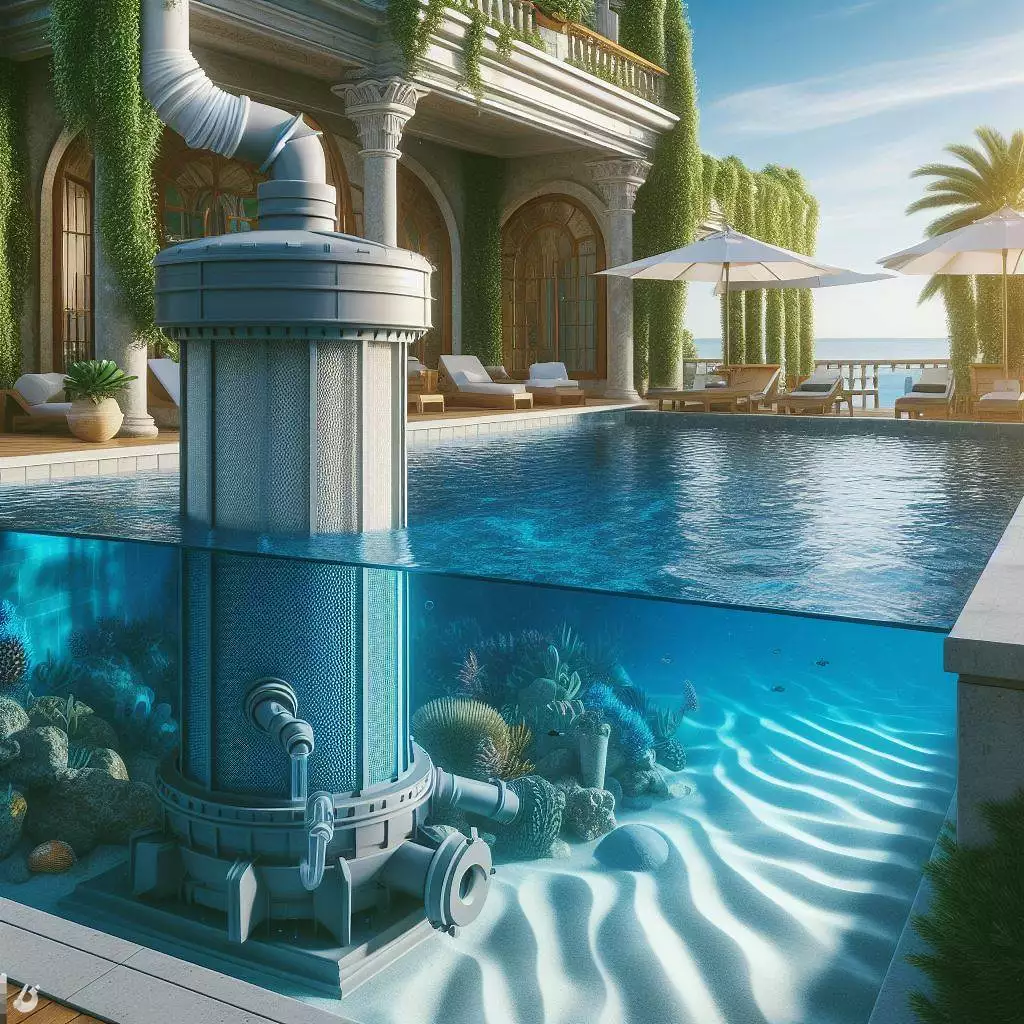Pool sand filters are essential components of swimming pool filtration systems, responsible for removing impurities and maintaining water clarity. Central to the filtration process is the pool filter media, typically composed of specially graded sand. Over time, the effectiveness of pool sand diminishes, necessitating its replacement to ensure optimal filtration performance. This article explores the factors influencing the frequency of pool sand filter media replacement, providing insights into best practices for maintaining efficient filtration in swimming pools.

Factors Influencing Pool Sand Filter Media Replacement Frequency
Usage Frequency
The frequency of pool sand filter media replacement is influenced by the pool’s usage frequency. High-traffic pools with frequent use require more frequent media replacement compared to pools with lower usage rates.
Pool Size
The size of the pool directly impacts the workload of the pool sand filter. Larger pools may accumulate debris and contaminants at a faster rate, necessitating more frequent media replacement to maintain optimal filtration efficiency.
Environmental Factors
Environmental factors such as surrounding vegetation, weather conditions, and nearby construction activities can affect the rate of debris accumulation in the pool. Pools located in areas prone to dust, pollen, or leaves may require more frequent media replacement to address increased debris levels.
Water Quality
The quality of pool water, including pH levels, chemical balance, and bather load, influences the lifespan of pool sand filter media. Imbalanced water chemistry or high bather loads can accelerate media degradation and require more frequent replacement.
Maintenance Practices
Proper maintenance practices, including regular backwashing, cleaning, and chemical treatment, play a crucial role in extending the lifespan of pool sand filter media. Neglecting routine maintenance tasks can lead to accelerated media degradation and the need for more frequent replacement.
Signs Indicating the Need for Pool Sand Filter Media Replacement
Decreased Filtration Efficiency
Reduced water clarity and decreased filtration efficiency are primary indicators of degraded pool sand filter media. If the water appears cloudy or contains visible debris despite regular filtration, it may be time to replace the filter media.
Increased Backwashing Frequency
Excessive backwashing requirements, where the filter needs to be cleaned more frequently than usual, suggest compromised filter media effectiveness. Frequent backwashing without noticeable improvement in water clarity indicates the need for media replacement.
Pressure Gauge Readings
Monitoring the pressure gauge readings on the pool sand filter can provide insight into media condition. A significant increase in pressure differential between the inlet and outlet suggests clogged or degraded filter media, necessitating replacement.
Visual Inspection
Visual inspection of the pool sand filter media can reveal signs of deterioration, including channeling, clumping, or irregularities in sand texture. Physical examination of the media during routine maintenance can help identify the need for replacement.
Best Practices for Pool Sand Filter Media Replacement
a. Regular Inspection: Periodic inspection of the pool sand filter media is essential for assessing its condition and identifying signs of degradation. Incorporating media inspection into routine maintenance schedules can facilitate timely replacement when necessary.
b. Follow Manufacturer Guidelines: Adhering to manufacturer guidelines regarding pool sand filter media replacement intervals is crucial for optimal filtration performance. Referencing manufacturer recommendations ensures that media replacement is conducted at appropriate intervals based on specific filter models and usage conditions.
c. Professional Assessment: Seeking professional assistance from pool maintenance professionals or certified technicians can provide valuable insights into the condition of pool sand filter media. Professional assessments, including water quality testing and media inspection, can help determine the optimal timing for media replacement.
d. Quality Media Selection: Choosing high-quality pool sand filter media from reputable suppliers ensures longevity and optimal filtration performance. Selecting media with appropriate gradation and composition for specific pool filtration systems enhances efficiency and minimizes the frequency of replacement.
Conclusion
Maintaining efficient pool sand filters is essential for ensuring clean and clear pool water. Understanding the factors influencing pool sand filter media replacement frequency, along with identifying signs indicating the need for replacement, enables pool owners to uphold optimal filtration performance. By adhering to best practices and incorporating regular inspection and maintenance routines, pool owners can prolong the lifespan of pool sand filter media and enjoy pristine pool water quality for extended periods.
